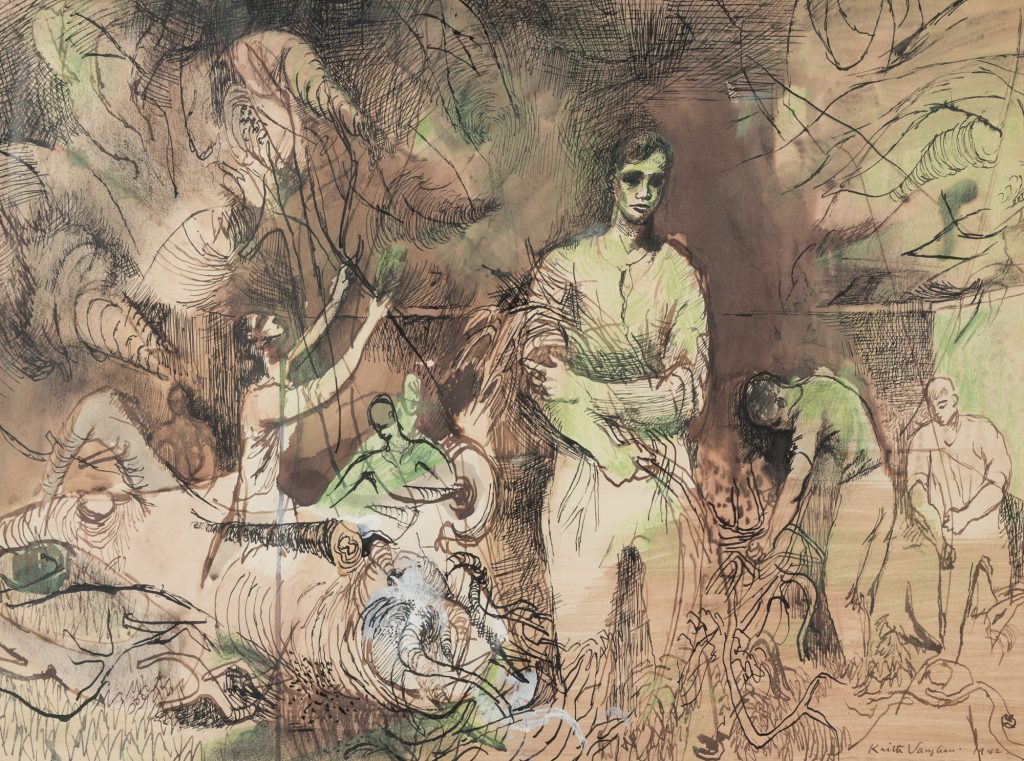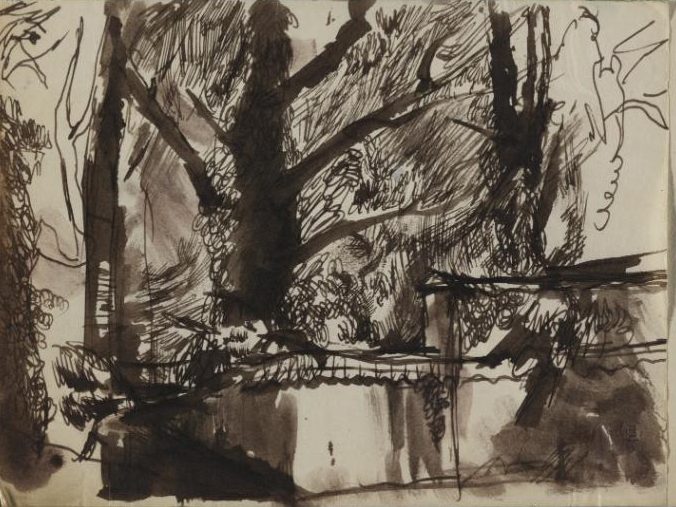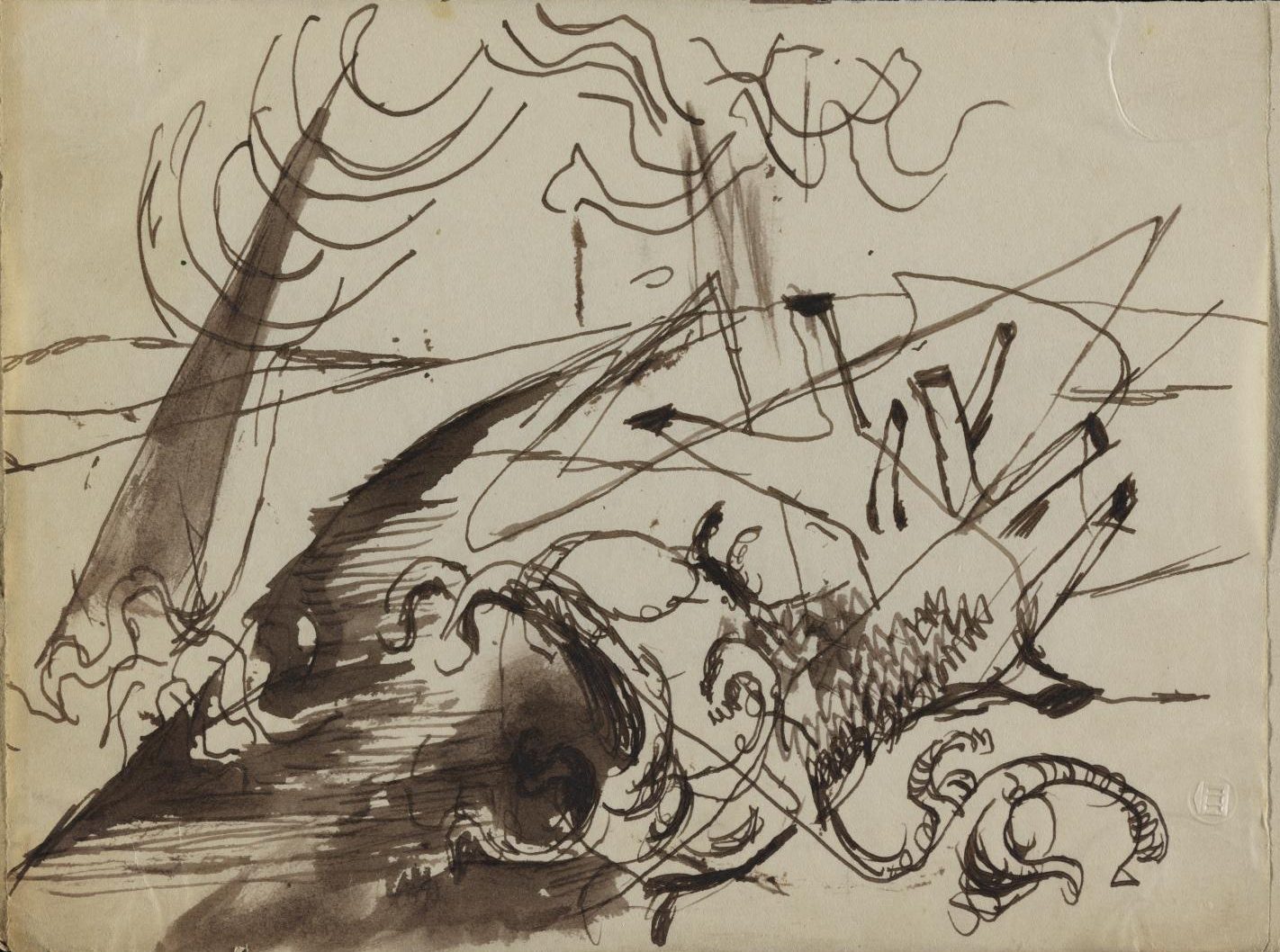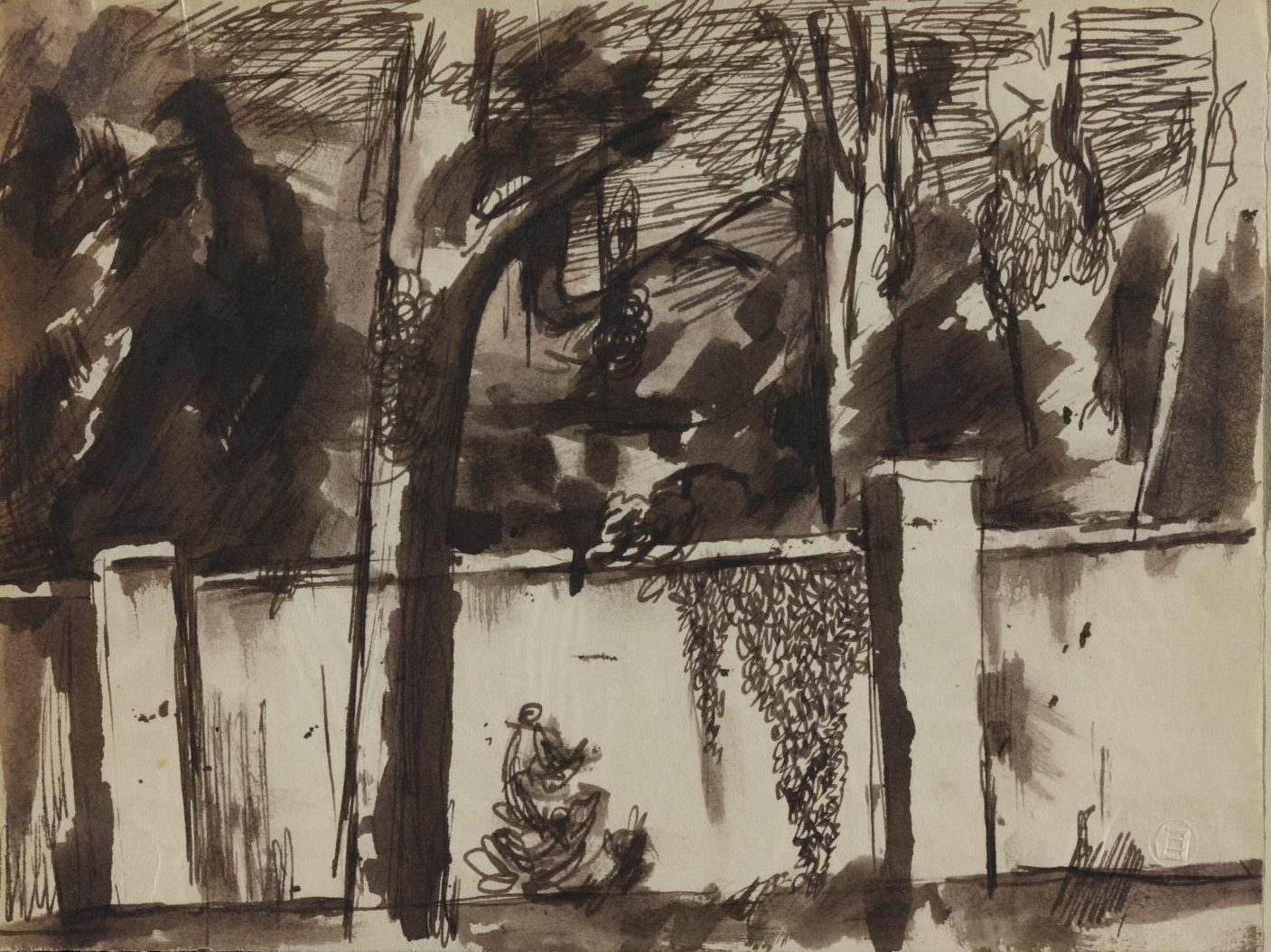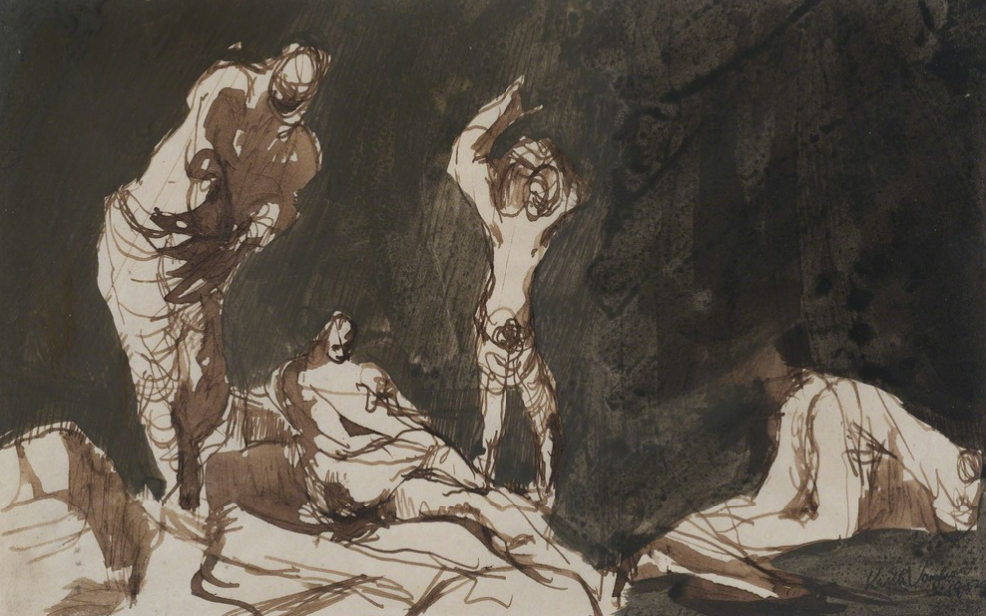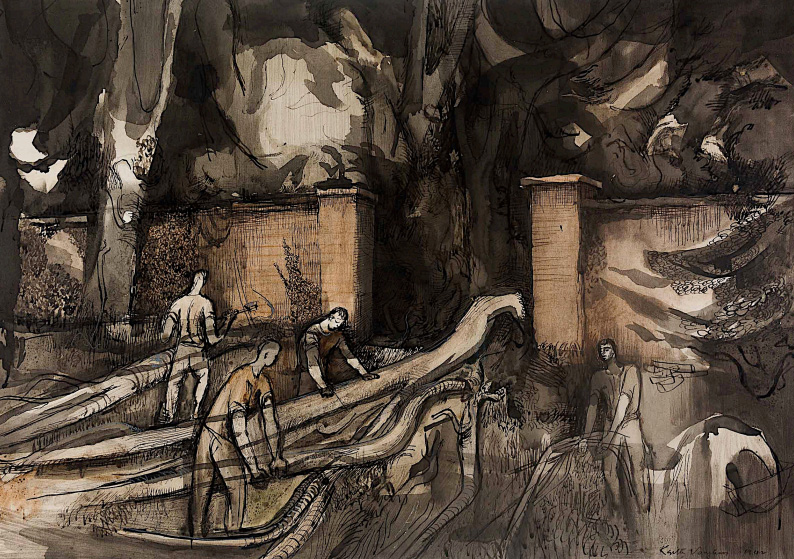
In 1939 Vaughan left his job to become a full time artist. During the war he took on Neo-romantic styles head on with the Graham Sutherland inky thorned bushes and the John Piper cloudy, dull skies. Later American painters such as Nicholas de Stael would influence him to use colour in tonal ways. The Second World War for Vaughan was spent waiting for it’s end, so he could paint and be free of the menial work he was doing. I don’t think there is anyone who wished to be an artist so much and had so much fear as he, having no formal training. He was like an actor, waiting in the wings to step on the stage and deliver his lines.

In 1944 he had his first solo show of Gouache paintings and drawings at the London Reid and Lefevre Gallery. These were all works made during the war time, for example, a hand-full of drawings and paintings of men from his unit cutting up trees in the parkland of Ashton Gifford House in 1942. This post is full of those images.
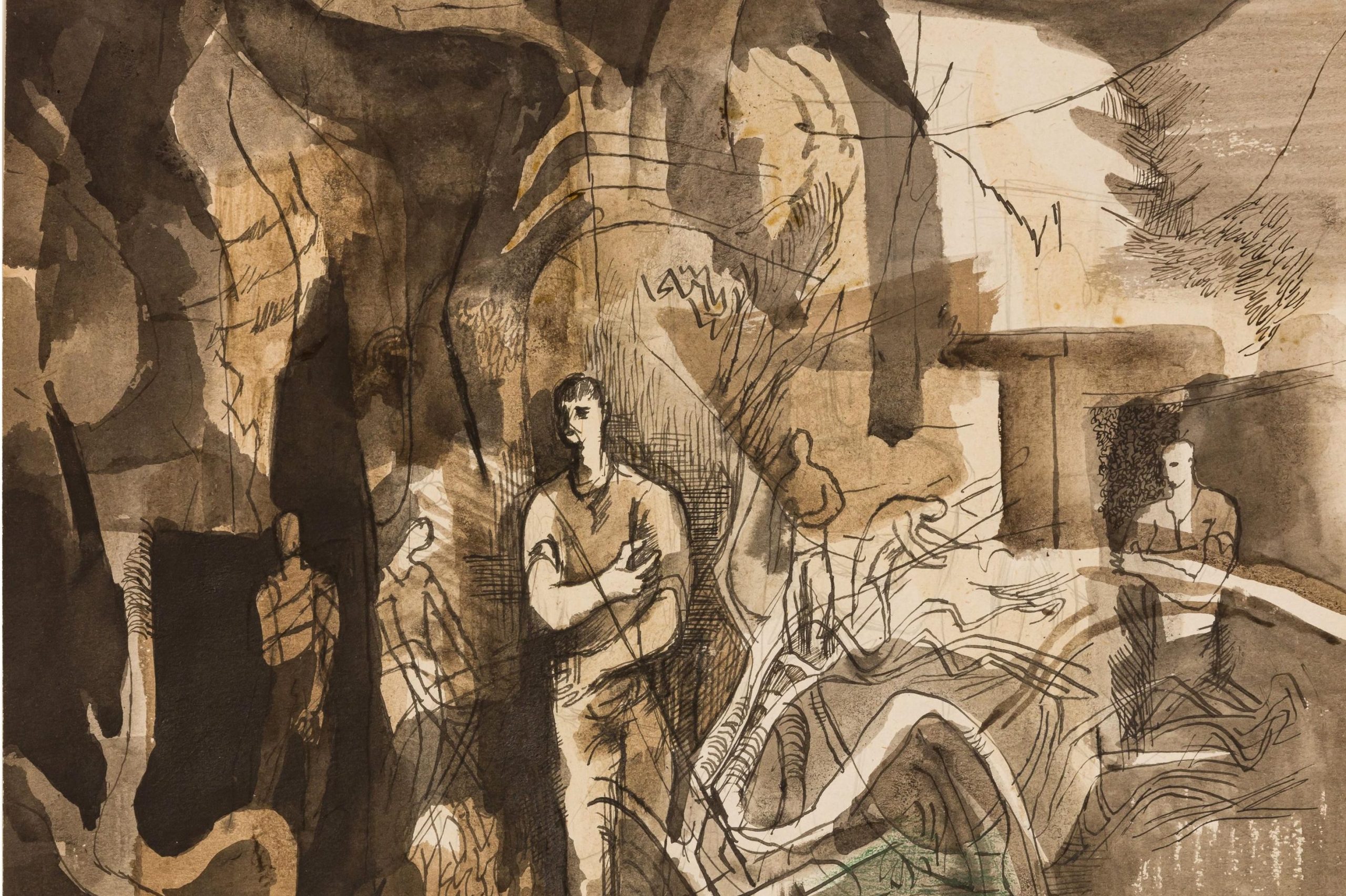
White and ochre branches plunging down into the oceanic surging of tangled nettles. People walking through the waist-high grass, through the aqueous leaf-green shadow, arms full of dead wood…and the wall running as an indefatigable horizontal, losing and finding itself in the jungle of weed and ivy…I wanted to capture this in lassoes of line and nets of colour, but it’s more difficult than writing about it.
Keith Vaughan, letter to Norman Towne, 12 October 1942
